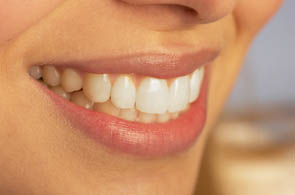Maplewood Family Dental
Category: DentistsAddress: 2168 Millburn Ave #201, Maplewood, NJ 07040, USA
Contact Phone: 973-763-0808
Thank you for your interest in our practice. Dr. Justin Fried is committed to providing his patients with complete and comprehensive dental care in General Dentistry. |
2168 Millburn Ave
Suite 201
Maplewood , NJ 07040
Our office hours can accommodate most any schedule. We know that your time is important, and we work to ensure that your visit happens as professionally and quickly as possible.
Monday: 8:00am - 8:00pm
Tuesday: 8:00am - 3:00pm
Wednesday: 8:00am - 6:00pm
Thursday: 8:00am - 7:30PM
Friday: Office Closed
Saturday: 8:00am - 1:00pm
Sunday: Office Closed
Dr. Fried obtained his undergraduate degree from Muhlenberg College in Allentown, PA. Dr. Fried graduated from Stony Brook School of Dental Medicine in Stony Brook, N.Y. He continued his education as the Chief Resident at Newark Beth Israel Medical Center.
Dr. Fried keeps himself up to date on the latest techniques and materials. He is a member of various study clubs and participates in continuing education courses to constantly grow his scope of dental knowledge. Justin and his wife, Randi, live in West Orange with their five wonderful children.

FILLINGS
Fillings are done to remove decay, and replace the affected tooth structure. It is called a filling because new a material fills hole that decay left. Now days most teeth are treated with bonded tooth colored composite resin fillings. Caught early enough, cavities can be treated easily and painlessly. If not treated decay can lead to tooth pain and/or infection, and the tooth would need root canal treatment or extraction.
BONDING
Bonding involves adhering composite resin material that is matched to the color of the tooth, to the front of the tooth. This is done to repair damage done to the tooth by decay, to alter the alignment of the tooth, close gaps between the teeth, or for cosmetic purposes. First the surface of the tooth is roughened in order to accept the bonding and hold it. A gel is applied to micro etch the tooth surface, and a primer/bond agent is applied so the material adheres to the surface. Then the material itself is placed on the tooth and hardened with intense light. The composite resin material is shaped and polished to get a lustrous finish as a last step.
SEALANTS
This is used to fill in narrow grooves in a tooth that cannot be adequately cleaned by brushing. In some cases, the tooth structure has fine grooves or pits which accumulate plaque, not because the person doesn't brush, but because they're too narrow to allow even one bristle into them. These will develop cavities over time, and you don't want that. So the dentist will brush on a coating that seals the grooves and pits, making it possible to brush off all the plaque and keep your teeth healthy.
NON-SURGICAL GUM TREATMENTS
The gums, ligaments, and bone around the teeth form the foundation for ones teeth. All structures are also referred to as the periodontium. When the periodontium is not healthy, it jeopardizes the teeth just as a bad foundation would threaten the stability of a house. Signs of unhealthy periodontium (gum disease) may be as follows: gums that are red and bleed easily, persistent bad breath, gums that are pulled away from the tooth, loose teeth, and changes in the position or bite of the teeth. Any of these signs may mean something is wrong. With the proper care, however, it may be possible to return them to a healthy state. This is where appropriate gum treatments come in. If you're having a problem, come in and see us so we can take care of it right away. The treatment usually involves a deep cleaning or root planing done under a local anesthetic, along with local antibiotic agents. If the gum disease gets too severe it may need to be treated through surgery or extraction. This is why it is important to get it treated at the first sign of a problem.
X-RAYS
This is a focused beam of X-Ray particles through bone which produces an image on special film, showing the structure through which it passed. This gives the familiar black and white images that doctors and dentists use to diagnose problems. X-rays are a necessary part of the diagnostic process, and not to use them could lead to undiagnosed disease. Without an X-ray of the whole tooth, and supporting bone and gum tissues, there is no real way to detect infection or pathology that requires attention.
In our office we use digital radiography which allows us to take X-rays using 50-70% less radiation versus conventional X-rays. Coupled with computer monitoring, digital x-ray technology allows us to enhance the images for better diagnosis of any dental concerns.
FAQs
Q: Which type of toothbrush should I use?
A: The brand of the toothbrush is not as critical as the type of bristle and the size of the head. A soft toothbrush with a small head is recommended because medium and hard brushes tend to cause irritation and contribute to recession of the gums, and a small head allows you to get around each tooth more completely and is less likely to injure your gums. It's unnecessary to "scrub" the teeth as long as you are brushing at least twice a day and visiting your dentist at least twice a year for cleanings.
Q: Is one toothpaste better than others?
A: Generally, no. However, it's advisable to use a fluoride containing toothpaste to decrease the incidence of dental decay. We recommend our patients use what tastes good to them as long as it contains fluoride.
Q: How often should I floss?
A: Flossing of the teeth once per day helps to prevent cavities from forming between the teeth where your toothbrush can't reach. Flossing also helps to keep your gums healthy.
Q: What's the difference between a "crown" and a "cap"?
A: These are restorations to repair a severely broken tooth by covering all or most of the tooth after removing old fillings, fractured tooth structure, and all decay. The restoration material is made of gold, porcelain, composites, or even stainless steel. Dentists refer to all of these restorations as "crowns". However, patients often refer to the tooth-colored ones as "caps" and the gold or stainless steel ones as "crowns".
Q: What's the difference between a "bridge" and a "partial denture"?
A: Both bridges and partial dentures replace missing teeth. A bridge is permanently attached to abutment teeth or, in some cases, implants. A partial denture is attached by clasps to the teeth and is easily removed by the patient. Patients are usually more satisfied with bridges than with partial dentures.
Q: What about "silver" fillings versus "white" fillings?
A: Although the U.S. Public Health Service issued a report in 1993 stating there is no health reason not to use amalgam (silver fillings), more patients today are requesting "white" or tooth-colored composite fillings. We also prefer tooth-colored fillings because they "bond" to the tooth structure and therefore help strengthen a tooth weakened by decay. While fillings are also usually less sensitive to temperature, and they also look better. However, "white" fillings cannot be used in every situation, and if a tooth is very badly broken-down, a crown will usually be necessary and provide better overall satisfaction for the patient.
Q: Do I need to have a root canal just because I have to have a crown?
A: No. While most teeth which have had root canal treatments do need crowns to strengthen the teeth and to return the teeth to normal form and function, not every tooth needing a crown also needs to have a root canal.
Categories
Employment Wanted
Latest Jobs
Employment Wanted
-
Jan 31, 2025 at 2:04am
-
Jan 31, 2025 at 2:04am
-
Jan 31, 2025 at 2:04am
-
Jan 31, 2025 at 2:04am
-
Jan 31, 2025 at 2:04am
-
Jan 31, 2025 at 2:04am
-
Jan 31, 2025 at 2:04am
-
No jobs too big no jobs too small...hire Clean Queens
Jan 31, 2025 at 2:04am
-
Experienced Nannies Available for Full-Time or Part-Time Care
Jan 30, 2025 at 9:51am
-
Residential & Commercial Cleaning Services
Jan 24, 2025 at 6:19pm
Help Wanted
-
Jan 31, 2025 at 2:04am
-
Jan 20, 2025 at 7:02am
-
Short Hills Nanny Position Available
Jan 1, 2025 at 12:32pm
-
Jan 1, 2025 at 12:32pm
-
Nanny Position in Franklin Lakes
Jan 1, 2025 at 12:32pm
-
Part time Nanny Position in Watching
Jan 1, 2025 at 12:32pm
-
Jan 1, 2025 at 12:32pm
-
Full time Caregiver for Maplewood
Jan 1, 2025 at 12:32pm
-
Loving Part-Time Nanny Needed in Jersey City, NJ
Dec 16, 2024 at 1:01pm
-
Experienced Nanny Wanted in Warren, NJ
Dec 16, 2024 at 1:01pm







